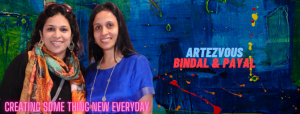India – The land of art and culture
India has always been known as the land that portrayed cultural and traditional vibrancy through its conventional arts and crafts identified as folk or tribal art. The folk and tribal arts of India are very ethnic and simple, and yet colorful and vibrant enough to speak volumes about the country’s rich heritage.
Madhubani, Warli, Phad, Gond, Kalamkari, Tanjore, Patachitra, Kalighat paintings are few folk art forms to name.
It is interesting to know about the evolution and existence of these art forms then and today’s time.
Here’s some information gathered on Madhubani paintings.
Madhubani paintings
Madhubani painting also known as Mithila art is one of the most popular Indian folk arts believed to be originated in the Kingdom of Janak (Sita’s father – Hindu epic – Ramayan) in the 8/7th century BC in Bihar when he had asked to develop these paintings in order to capture the moments of his daughter Sita’s wedding to Prince Rama.
Madhubani paintings mostly depict people and their association with nature and scenes and deities from the ancient epics.
Traditionally, painting was one of the skills that was passed down from generation to generation in the families of the Mithila Region, mainly by women.
This age-old art is achieved by the use of fingers, twigs, brushes, nib-pens, and matchsticks, using natural dyes and pigments, and is characterized by eye-catching geometrical patterns.
The uniqueness of this art form is selectiveness in its artistic expression. In antiquity, this art was made on mud-walls or soil-ground on certain auspicious occasions and was erased the very next day. And this is why there has been no preservation of these works. In a sense, the artworks were natural and momentary. Nevertheless, this popular art used to pass easily from one generation to another without the help of any technical tools. The very nature of such transformation of knowledge from one generation to another led to its expansion based on experiment and creativity.
Very recently, all the government buildings of the Madhubani city, including the railway station, town hall, administrative office buildings, and government bungalows, etc. have been thoroughly covered by Madhubani paintings. A number of long-distance trains (coaches) of India have been completely turned into artistic works showing Madhubani paintings. With such efforts on the part of government and local artists, Madhubani paintings are once again emerging as a major art form on the artistic canvass of the modern world.
Check out this video for some of the artworks from various artists.
Stay tuned to read more about other art forms coming soon.




Hiral nicely depicted ..
Lovely information of such beautiful art work
Way to go girl, wel ‘crafted article’ 😉 always proud of u 😉
Beautiful art beautifully explained 👍🏻
Nice to know our history of Madhubani painting… eagerly waiting for next blog
Well articulated Hiral…this is succinctly written for guys like me who have no clue & who probably won’t bother wikipedia’ing it too. Kudos!